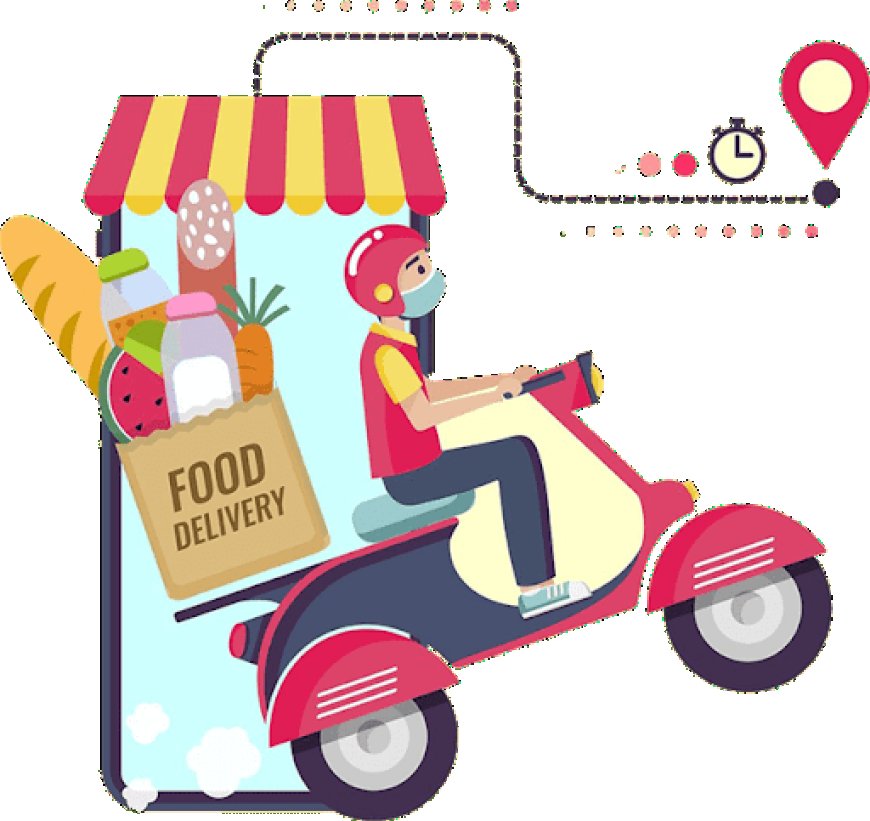Developing a Food Delivery App: Key Steps and Considerations
Developing a food delivery app requires robust market research, seamless UI/UX design, and integration of advanced features like real-time tracking and multiple payment options. Leveraging agile methodologies and continuous user feedback ensures a high-quality, user-centric product that stands out in the competitive market.

The food delivery app market has witnessed exponential growth, driven by changing consumer preferences and technological advancements. Developing a food delivery app can be a lucrative endeavor, but it requires careful planning, robust development, and strategic execution. Here's a comprehensive guide on the essential steps and considerations for developing a successful food delivery app.
#### 1. Market Research and Analysis
**Understanding the Market:**
- **Identify Target Audience:** Determine who your app will serve – busy professionals, college students, families, etc.
- **Competitor Analysis:** Study existing food delivery apps like Uber Eats, DoorDash, and Grubhub to identify their strengths, weaknesses, and unique selling points.
- **Market Trends:** Keep an eye on market trends such as the rise of contactless delivery, preference for local food, and the integration of healthier food options.
#### 2. Defining the App's Features
**Core Features:**
- **User Registration and Profile Management:** Allow users to sign up, log in, and manage their profiles.
- **Restaurant Listings:** Provide comprehensive listings with menus, ratings, and reviews.
- **Order Placement and Tracking:** Enable users to place orders and track them in real-time.
- **Payment Integration:** Support multiple payment options including credit cards, mobile wallets, and COD (Cash on Delivery).
- **Notifications:** Send real-time updates on order status, promotions, and discounts.
**Advanced Features:**
- **In-app Chat:** Facilitate communication between customers, delivery personnel, and restaurant staff.
- **AI-based Recommendations:** Use AI to suggest restaurants and dishes based on user preferences and order history.
- **Loyalty Programs:** Implement reward systems to encourage repeat usage.
- **Geolocation Services:** Improve delivery efficiency and accuracy using GPS tracking.
#### 3. Choosing the Right Technology Stack
**Front-End Development:**
- **iOS:** Swift or Objective-C
- **Android:** Kotlin or Java
- **Cross-Platform:** React Native or Flutter for simultaneous deployment on both iOS and Android.
**Back-End Development:**
- **Server-Side Languages:** Node.js, Ruby on Rails, Python, or Java
- **Database:** MySQL, PostgreSQL, or MongoDB for data management
- **APIs:** RESTful APIs for seamless communication between the client-side and server-side
**Other Essential Technologies:**
- **Cloud Storage:** AWS, Google Cloud, or Microsoft Azure for scalable storage solutions
- **Payment Gateways:** Stripe, PayPal, or Braintree for secure payment processing
- **Push Notifications:** Firebase Cloud Messaging (FCM) or Apple Push Notification Service (APNS)
#### 4. UI/UX Design
**User-Friendly Interface:**
- **Intuitive Navigation:** Ensure easy and intuitive navigation to enhance user experience.
- **Aesthetic Design:** Use appealing and consistent design elements to attract and retain users.
- **Accessibility:** Make the app accessible to all users, including those with disabilities.
#### 5. Development and Testing
**Agile Development Methodology:**
- **Sprint Planning:** Break down the development process into manageable sprints.
- **Continuous Integration and Deployment (CI/CD):** Implement CI/CD for regular updates and bug fixes.
**Testing:**
- **Functional Testing:** Ensure all features work as intended.
- **Performance Testing:** Check the app’s performance under various conditions.
- **Security Testing:** Protect user data and ensure secure transactions.
#### 6. Launch and Marketing Strategy
**Pre-Launch:**
- **Beta Testing:** Release a beta version to a select audience to gather feedback and make improvements.
- **App Store Optimization (ASO):** Optimize your app’s listing on the App Store and Google Play Store for better visibility.
**Post-Launch:**
- **Marketing Campaigns:** Use social media, influencers, and digital marketing to promote your app.
- **User Feedback:** Continuously gather and analyze user feedback to make necessary updates and improvements.
#### 7. Post-Launch Maintenance and Updates
**Regular Updates:**
- **Feature Enhancements:** Introduce new features based on user demand and market trends.
- **Bug Fixes:** Regularly fix bugs and performance issues.
**Customer Support:**
- **24/7 Support:** Provide round-the-clock support to address user issues and queries.
### Conclusion
Food delivery app development is a complex yet rewarding process that involves thorough research, strategic planning, and meticulous execution. By focusing on user needs, leveraging the right technology, and continuously improving based on feedback, you can create a successful food delivery app that stands out in the competitive market.
### References
- Market research data from industry reports and journals
- Technical documentation from software development frameworks
- Case studies from existing food delivery apps
By adhering to these guidelines and focusing on delivering value to users, your food delivery app can thrive in the bustling digital marketplace.
What's Your Reaction?


























